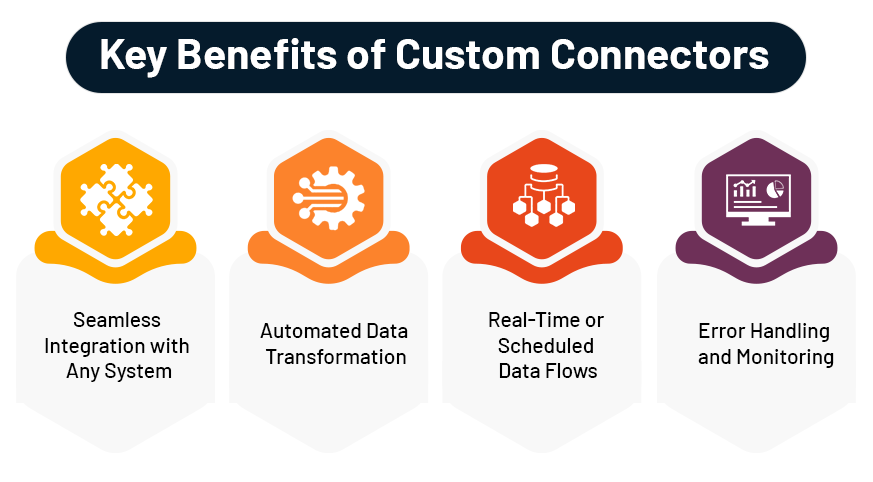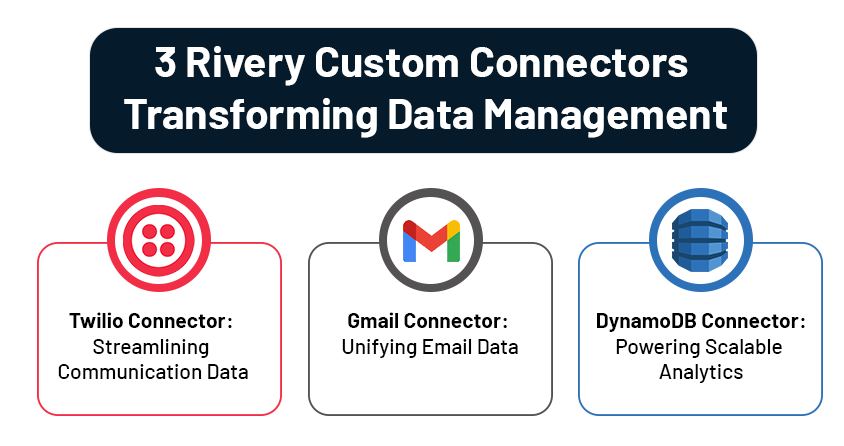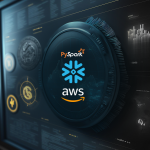Why this blog?
If your organization relies on multiple data sources, standard data connectors might not always meet your needs. This blog breaks down how custom connectors enable businesses to:
⇒ Integrate niche and legacy systems
⇒ Automate data transformation for real-time insights
⇒ Enhance data governance and error handling
⇒ Future-proof data pipelines with scalable, flexible integration
Whether you’re a data engineer, analyst, or business leader, this blog will help you understand how custom connectors streamline operations and drive data-driven success.
Collecting data is just the beginning, turning it into real value is where the challenge lies. To make the most of their data, businesses need to seamlessly connect diverse sources, transform raw information into actionable insights, and do it all with speed and precision. But what happens when off-the-shelf connectors don’t cut it? That’s where custom Rivery connectors, especially with platforms like Rivery, change the game, enabling businesses to navigate complex data ecosystems with ease.
Let’s explore the transformative power of custom connectors, how they streamline data integration, and why they’re an essential tool for modern data-driven organizations.
Fragmented Data Across Diverse Sources
Most organizations rely on a wide array of tools and platforms, from CRMs like Salesforce to ERP systems, marketing automation platforms, and bespoke legacy systems. While many data integration platforms offer pre-built connectors for popular applications, businesses often encounter scenarios where:
- Niche or proprietary systems lack native connectors
- Legacy applications use outdated protocols
- Unique business logic requires custom data transformations
- Real-time data synchronization is crucial but unsupported by standard tools
These gaps can lead to data silos, manual data extraction, and slow decision-making processes. The result? Missed opportunities, delayed insights, and an uphill battle for scalability.
Custom Connectors to Bridge the Gaps
Custom connectors provide a tailored approach to data integration. They act as bridges, linking unsupported systems to modern data pipelines, enabling real-time or batch data movement, and facilitating complex transformations. Platforms like Rivery make this process even more powerful, providing a no-code/low-code environment to rapidly develop and deploy custom connectors without heavy engineering dependencies.

Here’s how custom connectors can supercharge your data strategy:
1. Seamless Integration with Any System
Custom connectors allow organizations to connect to virtually any data source, whether it’s an old on-premises database, a third-party API without official support, or a specialized industry platform. They can handle diverse protocols like REST, SOAP, FTP, or even proprietary interfaces. With Rivery, building and maintaining these connections is streamlined, reducing development cycles and accelerating time to value.
2. Automated Data Transformation
Raw data rarely arrives in a usable format. Custom connectors can automatically clean, normalize, and transform data, applying business logic on the fly. For example, converting date formats, aggregating metrics, or enriching records with third-party data. Rivery’s transformation capabilities let teams build complex logic within the platform, simplifying data preparation.
3. Real-Time or Scheduled Data Flows
Whether your business needs instant updates or periodic batch processing, custom connectors offer flexibility. They can trigger events based on webhooks, schedule regular syncs, or handle continuous data streams. Rivery supports both real-time and scheduled ingestion, empowering organizations to choose the right data flow model for their needs.
4. Error Handling and Monitoring
A robust custom connector doesn’t just move data it monitors for errors, retries failed requests, and logs detailed telemetry. This ensures data integrity and provides engineers with the insights needed to troubleshoot issues quickly. Rivery’s built-in monitoring tools make it easy to track connector health and receive proactive alerts.
Exploring Three Custom Connectors
Let’s dive into three examples of how custom connectors built within Rivery have transformed data integration for businesses:

Twilio Connector: Streamlining Communication Data
For companies relying on SMS notifications or customer interactions through Twilio, managing message logs can be a challenge. A custom connector built with Rivery automates the extraction of SMS logs using Twilio’s API with Basic Authentication (Account SID & Auth Token). These logs are stored in Amazon S3 in JSON Lines (.jsonl) format, making them easy to query and analyze. This enables businesses to track communication patterns, monitor delivery status, and analyze engagement metrics without manual intervention.
Gmail Connector: Unifying Email Data
Email remains a vital communication channel, but consolidating email data for analysis can be complex. With Rivery, businesses can build a custom Gmail connector that extracts email data via Gmail’s REST API. Since Rivery doesn’t have a pre-built Gmail connector, this approach allows companies to use Gmail API credentials and OAuth authentication for secure access. The data is then stored in an S3 bucket, ready for downstream analysis ,whether that’s sentiment analysis, response time tracking, or user behavior insights.
DynamoDB Connector: Powering Scalable Analytics
For organizations leveraging AWS DynamoDB, integrating that data with analytical tools like Amazon Redshift is key to unlocking deeper insights. Using Rivery’s Logic River with a Python script, a custom connector can fetch data from DynamoDB, handle large datasets, and perform necessary transformations for Redshift compatibility. This streamlines the ETL process, making it easier to analyze operational data, track trends, and make data-driven decisions without manual data handling.
Real-World Impact on Business Potential
Imagine a global supply chain company struggling to unify logistics data from dozens of regional systems. Off-the-shelf solutions couldn’t accommodate all the unique data sources, leading to manual data entry and reporting delays. By building custom connectors with Rivery, they automated data ingestion, achieved real-time tracking, and reduced manual effort by 70%. The result? Faster decision-making and improved customer satisfaction.
An Evolving Data Ecosystem
As the data landscape advances, so do the needs of businesses. Custom connectors offer the agility to adapt to new platforms, integrate emerging technologies like AI and IoT, and scale alongside organizational growth. Rivery’s constantly evolving platform ensures organizations can build, maintain, and enhance connectors as business requirements shift.
By investing in flexible, customizable data integration solutions, companies can future-proof their data infrastructure, break down silos, and unlock the full value of their data assets.
Moving Forward
Data is the lifeblood of modern business, but without the right integration strategy, even the most valuable data remains untapped. Custom connectors empower organizations to build dynamic, scalable data ecosystems that drive innovation, efficiency, and growth.
Whether you’re navigating legacy systems, adopting cutting-edge technologies, or orchestrating complex data flows, custom connectors especially with Rivery’s powerful platform are your key to transforming data chaos into business clarity.
Are you looking to build and deploy custom Rivery connectors that fits your business’ unique needs?




